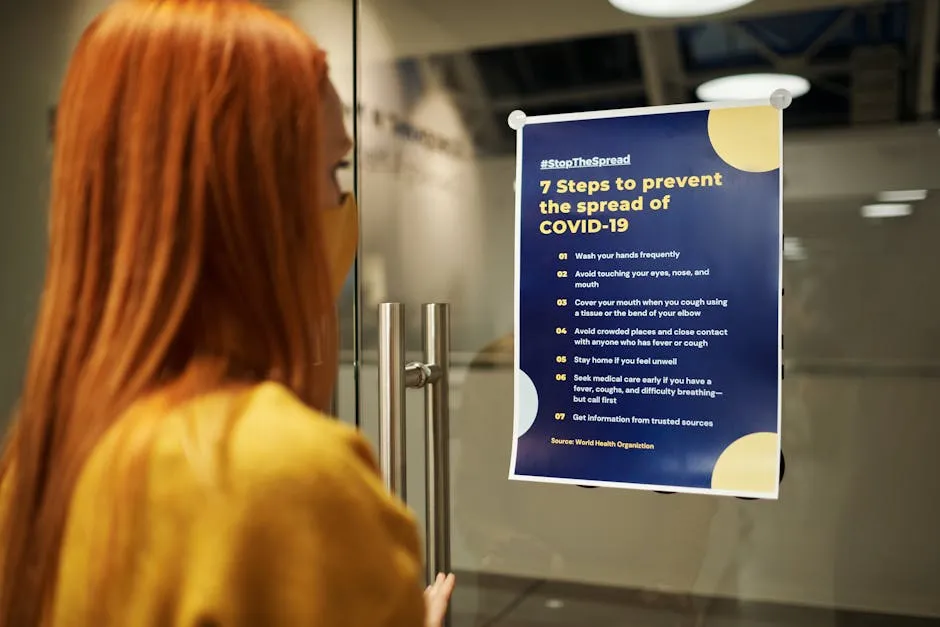
Why Do We Get Brain Freeze from Cold Foods?
Introduction
Ah, brain freeze! That pesky little phenomenon that strikes just when you’re about to enjoy that heavenly scoop of ice cream on a hot summer day. Officially known as sphenopalatine ganglioneuralgia (try saying that three times fast!), brain freeze is more than just a cute name. It’s a genuine reaction to cold foods and drinks that can leave you reeling in pain.
Picture this: you just devoured a mountain of ice cream or taken a generous sip of a slushy drink, and suddenly, a sharp pain shoots through your head. What gives? Brain freeze is the body’s quirky way of responding to the rapid temperature drop in your mouth. It’s like your brain is throwing a tantrum because it can’t handle the chill!
In this article, we’ll dig into the nitty-gritty of brain freeze. We’ll explore its causes, symptoms, and, yes, even some remedies to help you combat this frosty foe. So grab a spoon and let’s get to the scoop on why brain freeze happens!

Understanding Brain Freeze
What is Brain Freeze?
Brain freeze, or sphenopalatine ganglioneuralgia, occurs when cold foods or drinks make contact with the roof of your mouth. As the cold substance hits, blood vessels in the palate respond. They constrict rapidly, a survival reflex aimed at maintaining core body temperature. Soon after, they dilate just as quickly, triggering pain signals through the trigeminal nerve. This nerve is responsible for sensations in your face and can cause referred pain, making it feel like the headache originates from your forehead.
While ice cream is the usual suspect, brain freeze can happen with any cold item. Slushies, popsicles, and chilled drinks are all guilty culprits. Speaking of slushies, why not whip up some fun at home with a Slushy Maker? It’s perfect for creating those icy drinks that can lead to brain freeze, but let’s be honest, they’re worth it!

Symptoms of Brain Freeze
When brain freeze strikes, you know it. The sensation is a sharp, sudden pain that typically lasts from a few seconds to about two minutes. It often feels like a stabbing headache in the forehead, temples, or behind the eyes. It’s a quick but intense discomfort that can make you pause and wonder if that ice-cold treat was worth it.
The good news? It’s harmless! While the pain can feel overwhelming, it usually resolves just as quickly as it appears. So, if you find yourself in the throes of brain freeze, don’t panic; it’s just your brain’s way of reacting to the chill. Just remember to take it easy with those frosty delights next time!

The Science Behind Brain Freeze
Mechanism of Action
Brain freeze, medically known as sphenopalatine ganglioneuralgia, happens when cold foods or drinks hit the roof of your mouth. This sudden temperature drop triggers a series of reactions in your body. First, blood vessels in the palate constrict rapidly. This is called vasoconstriction. It’s like your body is trying to protect itself from the cold, much like how we shiver when it’s chilly outside.
But just as quickly, those blood vessels dilate again, known as vasodilation. This rapid change can confuse the trigeminal nerve, which carries sensation from your face to your brain. When the trigeminal nerve gets activated, it sends pain signals that your brain misinterprets. Instead of perceiving the pain as coming from the roof of your mouth, your brain feels it in the forehead, temples, or behind the eyes. It’s like a trick your body plays on you—thanks, but no thanks!
This process can be compared to a rollercoaster ride. You buckle in for a smooth ascent, but suddenly it’s a freefall! The swift changes in blood flow are akin to those quick drops. They can be startling and uncomfortable, leading to that infamous brain freeze sensation.

Research Insights
Research on brain freeze has revealed fascinating insights. Dr. Jorge Serrador, a cardiovascular researcher, conducted a study that measured how the brain reacts to sudden cold exposure. In his research, participants sipped ice-cold water through a straw that targeted the palate. The results showed a significant increase in blood flow through the anterior cerebral artery, which supplies blood to the brain’s frontal regions.
As the cold substance warmed, the pain subsided almost immediately. This suggests that the body’s response is not just a random flare-up but rather a protective mechanism. The anterior cerebral artery theory further explains this phenomenon. When the brain detects a rapid change in temperature, it reacts by increasing blood flow to maintain a stable temperature, hence the pain signal. It’s a bit like your brain’s way of saying, “Hey, warm this up before I freeze!”
Interestingly, Dr. Serrador’s findings also indicated that people with migraines might experience brain freeze more frequently. This connection could imply that individuals prone to migraines have a heightened sensitivity to these abrupt temperature changes.
Brain Freeze vs. Other Headaches
Now, let’s compare brain freeze with migraines and other headache types. Brain freeze is usually a fleeting experience, lasting only a few seconds to two minutes. In contrast, migraines can linger for hours or even days, often accompanied by nausea and sensitivity to light and sound. While both involve blood vessel changes, the mechanisms and severity differ greatly.
Research shows that migraine sufferers may have an increased likelihood of experiencing brain freeze. One study found that individuals with a history of migraines reported more frequent brain freeze episodes than those without. This suggests that the processes at play during a brain freeze might be similar to those triggering migraines.
In summary, brain freeze is a harmless yet perplexing experience that can provide a sharp reminder to take it easy on those frosty treats. So, the next time you indulge in a scoop of ice cream and feel that familiar jolt, just remember: it’s all in the science!

Causes of Brain Freeze
Factors Contributing to Brain Freeze
Brain freeze is not just a product of cold consumption; several factors play a role in this fleeting but annoying sensation. First, let’s talk about speed. If you’re the type to down an ice-cold slushy in record time, congratulations! You might be the proud owner of a brain freeze. Rapid consumption is a significant trigger. When you gulp down cold treats too quickly, your palate gets a sudden shock.
Next up, we have the temperature of the food or drink. Obviously, the colder the item, the more likely it is to induce brain freeze. But did you know that the surface area of the item matters too? A big scoop of ice cream is more likely to cause brain freeze than a tiny sip of cold water. So, when you’re enjoying a massive sundae, proceed with caution!

Individual susceptibility also plays a role. Some folks are more prone to brain freeze than others. It’s thought that people who experience migraines may be more susceptible. Their nervous systems might respond more intensely to the sudden temperature change. This could mean that when they enjoy a cold treat, they are also signing a not-so-pleasant deal with brain freeze.
Moreover, external factors like inhaling cold air too quickly or jumping into a cold pool can also trigger this phenomenon. So, whether you’re munching on ice cream or taking a deep breath of frosty air, brain freeze can hit when you least expect it.

Connection to Other Conditions
Now, let’s explore how brain freeze connects with other medical conditions. Research suggests a notable link between brain freeze and migraines. Those who suffer from migraines often report experiencing brain freeze more frequently. The exact reason remains a bit of a mystery, but it likely ties back to the underlying mechanisms of both headaches.
The trigeminal nerve, which is responsible for sensations in the face, gets involved in both conditions. It seems that the same nerve pathways that trigger a brain freeze can also spark migraine attacks. This similarity means that if you’re already prone to migraines, enjoying a rapid ice-cream binge might just land you in a double whammy of headache fun.
Additionally, other types of headaches, such as cluster headaches, might share this connection. While not everyone with migraines will experience brain freeze, the overlap suggests a fascinating relationship between cold stimuli and headache disorders. If you notice that brain freeze is more frequent for you, especially during a hot summer, it might be time to take it slow with those frozen delights.

Treatment and Prevention
Immediate Relief Strategies
So, you’ve been ambushed by brain freeze. What now? First things first, remove that cold item from your mouth. You want to eliminate the source of the pain as quickly as possible. But don’t just sit there wondering why you didn’t take smaller bites! Here are some quick relief strategies to ease that sudden shock to your senses.
One effective method is to press your tongue against the roof of your mouth. This helps transfer warmth to the area, alleviating the pain in no time. Think of it as a mini heat therapy session for your palate. Another remedy is to sip on a warm drink. A cozy cup of tea or warm water works wonders in neutralizing the chill. If you want to elevate your hot drink game, consider a Hot Chocolate Maker for those chilly evenings!

If neither of these options is available, don’t fret! You can also try covering your mouth and nose with your hands and breathing rapidly. This creates a warm air pocket that can help soothe the nerves in your palate.
Remember, the best approach is to be prepared. Next time you find yourself enjoying cold treats, keep these quick relief strategies in mind. With a little foresight, you can enjoy your favorite summer indulgences without the fear of a painful brain freeze!

Preventative Measures
Now, let’s talk prevention! Avoiding brain freeze is all about slowing down. If you want to savor that ice cream, take smaller bites and let each one warm up a bit in your mouth before swallowing. This little trick can keep that searing pain at bay.
Another strategy is to hold cold items in your front mouth for a few seconds. This helps warm them before they hit the sensitive roof of your palate. You might also want to alternate between cold treats and a warm beverage. It’s like a dance for your taste buds—one moment chilly, the next cozy!
Education and awareness play a crucial role in reducing brain freeze occurrences. Many people don’t realize how quickly these frosty headaches can strike. By spreading the word, you can help friends and family enjoy their cold treats without the fear of brain freeze sneaking up on them.
So, whether you’re at a summer picnic or indulging in a late-night ice cream binge, remember these tips. A little caution can go a long way in keeping your brain free from freeze!

Fun Facts and Myths about Brain Freeze
Common Misconceptions
Let’s bust some myths about brain freeze! Many think it can cause permanent damage. Thankfully, this is just a rumor. Brain freeze is harmless and temporary. While it feels intense, it won’t leave you with any lasting effects.
Another misconception is that only ice cream can trigger brain freeze. Not true! Popsicles, slushies, and even icy cold drinks can all pull the trigger. The real culprit is the rapid cooling of the roof of your mouth, regardless of the source. If you’re into DIY popsicles, you might want to check out Popsicle Molds for creating your own frozen treats!

Interesting Trivia
Did you know that the first documented case of brain freeze dates back to the 1770s? A British naval officer in Sicily reported a sudden headache after devouring ice cream. It’s been known as “ice cream headache” ever since!
Fun fact: the term “brain freeze” was first coined in 1991 and has since become synonymous with chilly treats. Researchers have since studied this phenomenon, and it turns out that a significant number of people experience it. Estimates suggest 30-40% of the population has faced this icy ordeal at least once!
So the next time you enjoy a frozen treat, remember that you’re not alone! Brain freeze is a quirky part of summer fun that we can all relate to. Just keep these fun facts in mind, and enjoy those cold delights with a smile—brain freeze and all!

Conclusion
In conclusion, brain freeze, or sphenopalatine ganglioneuralgia, is a quirky yet common experience that occurs when you indulge in cold treats too quickly. We explored how this phenomenon arises from the rapid constriction and dilation of blood vessels in the roof of your mouth, leading to that sharp pain in your head. It’s a brief, intense discomfort but nothing to fret about!
While brain freeze can feel excruciating for a few moments, it’s a harmless reaction of your body to extreme cold. The good news is that the pain subsides quickly, often within seconds to a couple of minutes. So, the next time you reach for that icy delight, remember it’s just your body’s way of saying, “Whoa there, slow down!”
As you savor your favorite frozen treats, consider enjoying them mindfully. Take smaller bites, let the coldness warm up a bit in your mouth, and avoid those sudden jolts of icy bliss. And while you’re at it, why not enjoy your ice cream in style with an Ice Cream Cone Cupcake Holder? This way, you can indulge without the mess!

FAQs
What is the medical term for brain freeze?
The medical term for brain freeze is sphenopalatine ganglioneuralgia. It’s a fancy way of describing the brief headache that occurs when something cold hits the roof of your mouth. This rapid temperature change triggers a nerve response, leading to a sudden headache that can feel quite sharp.
How long does brain freeze last?
Typically, brain freeze lasts anywhere from a few seconds to about two minutes. The intensity of the pain can vary, but most people experience a sharp, sudden discomfort that quickly fades away. It’s a brief interruption to your enjoyment of cold treats but usually resolves before you know it!
Can brain freeze lead to serious health issues?
Rest assured, brain freeze is harmless! While it may feel intense, it does not lead to any serious health issues. It’s simply your body reacting to a sudden cold stimulus. If you experience frequent or prolonged headaches, it might be worth consulting a medical professional, but brain freeze itself is nothing to worry about.
Is there a way to prevent brain freeze?
Yes! To prevent brain freeze, try consuming cold treats slowly. Take smaller bites or sips, allowing the cold to warm up in your mouth before swallowing. Additionally, you can hold cold foods in the front of your mouth for a few seconds. This simple adjustment can significantly reduce your chances of experiencing brain freeze.
Do all people experience brain freeze?
Not everyone experiences brain freeze, but studies suggest that about 30-40% of individuals may encounter this phenomenon. Some people are more susceptible, especially those who suffer from migraines. It seems that the intensity and likelihood of brain freeze can vary from person to person, but it’s a common occurrence, particularly during hot weather!
Please let us know what you think about our content by leaving a comment down below!
Thank you for reading till here 🙂
To learn more about why we get brain freeze from cold foods, check out this article on brain freeze.
All images from Pexels




